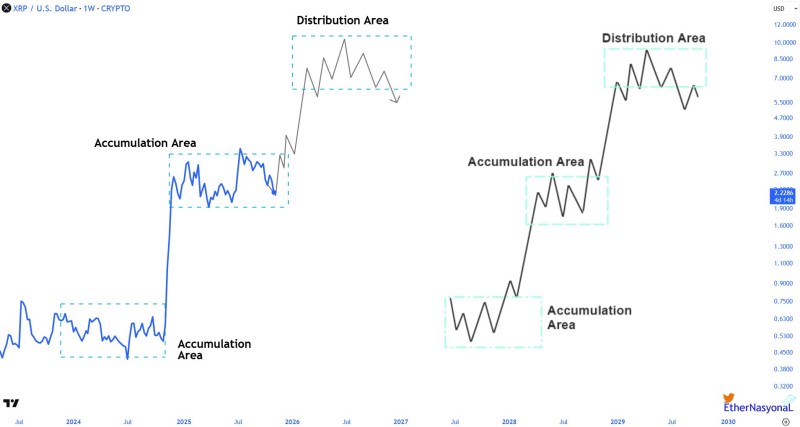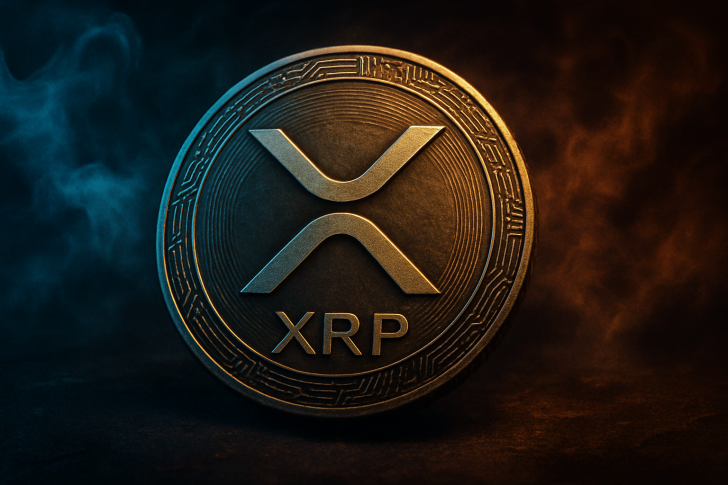XRP might be quietly setting up for its next big move. The chart shows XRP moving through repeating cycles of accumulation and distribution—and if history rhymes, we could be on the cusp of another significant expansion phase.
The Current Picture: Accumulation Phase
According to a Wyckoff-based analysis shared by ChartNerd, the cryptocurrency is following a century-old market pattern that describes how institutional money accumulates assets before pushing prices higher.

Right now, XRP appears to be consolidating in an accumulation zone between roughly $0.45 and $0.70. This is the stage where long-term investors build positions while the market trades sideways with low volatility. It's not flashy, but it's foundational—historically, these quiet periods have preceded XRP's most explosive rallies.
The Wyckoff model fits XRP's behavior surprisingly well for a few reasons:
- Repeated base-building before breakouts — XRP has a track record of long consolidation phases followed by sharp upward moves
- Psychological cycles — The pattern reflects real investor sentiment swings from fear to euphoria that have driven past price action
- Institutional accumulation signals — Low volatility and tight ranges often come before liquidity surges, exactly what Wyckoff theory predicts
On top of the technicals, XRP is getting support from fundamentals like Ripple's progress in cross-border payments, improving regulatory clarity, and growing institutional interest—all of which could reinforce the bullish setup.
What Could Come Next?
If the Wyckoff cycle plays out as charted, XRP could be heading into a markup phase in 2025—the expansion stage where prices climb rapidly. Past cycles saw XRP multiply several times over in just months during similar phases. The chart projects a distribution zone (where early buyers take profits) somewhere between $5 and $8 later in the decade.
Looking further out, the model suggests XRP could follow a multi-year rhythm: accumulate near current levels, expand toward $2–$3 in 2025, distribute around $5–$8, then enter a new accumulation phase before the next leg up toward 2030. Each cycle happens at higher price levels, pointing to long-term structural growth.
 Saad Ullah
Saad Ullah

 Saad Ullah
Saad Ullah


